Quarterbacks Brock Osweiler, Jared Goff, Ryan Fitzpatrick and Carson Wentz played leading roles in some of the most dramatic moves this NFL offseason. My run through all 32 teams' boldest and/or riskiest offseason decisions extends from ownership to coaching to rosters and beyond.
ARI | ATL | BAL | BUF | CAR | CHI | CIN | CLE | DAL | DEN | DET | GB | HOU | IND | JAC | KC | LA | MIA | MIN | NE | NO | NYG | NYJ | OAK | PHI | PIT | SD | SF | SEA | TB | TEN | WAS

Arizona Cardinals
The move: Acquiring pass-rusher Chandler Jones
The Cardinals have been the NFC's second, fifth and second seeds during three seasons under coach Bruce Arians, but the team has fallen short of a Super Bowl while scrambling to produce an outside pass-rush from declining veterans. Jones' addition via trade with New England signals a commitment to getting the Cardinals over the top in the playoffs this season. Jones has 30 sacks over the past three regular seasons, while Calais Campbell (21) and John Abraham (11.5) lead Arizona with a combined 32.5 over that span. Jones has no contract beyond 2016, but the win-now Cardinals can worry about that later.

Atlanta Falcons
The move: Signing former Cleveland Browns center Alex Mack to a five-year, $45 million contract
The Falcons seldom had to worry about the center position when Todd McClure was starting all but four regular-season games from 2001-2012. The snap itself became a problem in 2015 as career guard Mike Person played out of position. Mack's arrival will stabilize the center spot. It also could revitalize the offensive line while settling down quarterback Matt Ryan. Ryan's career sack rate was 3.8 percent with McClure on the field and 5.3 percent without him (3.8 percent would have ranked third in the NFL last season, while 5.3 percent would have ranked 17th).

Baltimore Ravens
The move: Signing Eric Weddle to a four-year, $26.5 million contract
The Ravens played it safe through most of the offseason. Reworking Joe Flacco's contract was a given, even with the quarterback coming off a serious injury. Using the sixth pick in the draft for tackle Ronnie Stanley was another routine, by-the-book move. Paying $6.5 million per year for a 31-year-old safety with 122 career regular-season starts was bolder. Plenty of safeties have produced at a high level past age 31. The Ravens simply haven't been aggressive players in free agency over the years, rarely signing players to deals such as this one. The move showed how desperate the Ravens had become at the safety position. Baltimore is betting on Weddle helping to restore a defense that still has a questionable pass-rush.

Buffalo Bills
The move: Using a first-round pick on defensive lineman Shaq Lawson
The Bills and every other team knew Lawson's shoulder problems could lead to season-threatening surgery. Buffalo used the 19th pick in the draft on Lawson anyway. General manager Doug Whaley said the team's medical staff signed off on the move. Whaley also said the Bills were comfortable sacrificing a few weeks of Lawson's rookie season in the interests of his longer-term health and productivity. That is how a GM should think, but how will ownership respond if Lawson's rookie season becomes a wash and the defense fails to improve its pass-rush partly as a result?

Carolina Panthers
The move: Rescinding CB Josh Norman's franchise tag
The Panthers weren't willing to make Norman the NFL's highest-paid cornerback. They weren't even willing to carry him on their roster for one season at $13.952 million once it became clear there would be no discount on a long-term deal. Rescinding the tag freed Norman to sign a five-year, $75 million deal with Washington. Carolina still has plenty of talent on its defense. The Panthers have also shown an ability to successfully fit together new pieces in their secondary. But they still let one of their most productive players walk out the door when they had mechanism for keeping him around.

Chicago Bears
The move: Trading up for Leonard Floyd in the draft's first round
Moving up two spots to select Floyd ninth overall was not a wild move by NFL standards, but it marked the first time the Bears had traded up in a first round since 1996. Floyd has the frame and athleticism to give the Bears' pass-rush a badly needed boost. Chicago spent big in recent seasons when adding free-agent defenders Pernell McPhee and Lamarr Houston. Linebackers Danny Trevathan and Jerrell Freeman were significant additions to the defense this offseason. Quick development from Floyd would help a team that has ranked 32nd in points allowed over the past three seasons (20th in 2015).

Cincinnati Bengals
The move: Showing restraint at wide receiver
The Bengals were in position to address a clear need without reaching until three wide receivers came off the board back-to-back-to-back before Cincinnati's first-round selection. The Bengals waited until the second round (55th overall) before selecting receiver Tyler Boyd. They still have dynamic receiving weapons with A.J. Green and Tyler Eifert returning, so there was no need to panic. But there could be some growing pains for an offense that lost both Marvin Jones and Mohamed Sanu in free agency. There was risk in letting Jones and Sanu leave without moving aggressively for replacements.

Cleveland Browns
The move: Overhauling their front office
The Browns have overhauled their front office multiple times in recent years, without gaining traction. Their move to hire New York Mets executive and "Moneyball" alumnus John DePodesta as chief strategy officer signaled a shift more fundamental in nature than any other the team has made under owner Jimmy Haslam. The move precipitated a roster purge that traditional football people think went too far -- to the point that even a massive influx of draft choices will be insufficient to fill. Much could depend upon whether another bold move pays off for Cleveland. The team's signing of Robert Griffin III in free agency gives them boom-or-bust potential at the most important on-field position.

Dallas Cowboys
The move: Ignoring the pass-rush
The Cowboys might have made the right move when they used the fourth overall choice in the draft for Ezekiel Elliott, who has the potential to be a dynamic threat at running back. The pick prevented them from using a top-five selection to address one of the NFL's weakest pass-rush rotations, but if Elliott's addition extends Tony Romo's career, this bold move could still pay off for Dallas.

Denver Broncos
The move: Letting Brock Osweiler walk out the door
Osweiler naturally wanted to leave following his demotion late last season. The Broncos were not interested in using the franchise tag for an unproven quarterback, especially when it could have come at the expense of outside linebacker Von Miller, one of the most dynamic players in the game. Still, teams tend to do what it takes to keep their projected starting quarterbacks. Denver's willingness to go a less certain route stands out as one of the boldest moves of the offseason.
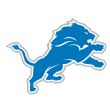
Detroit Lions
The move: Signing Marvin Jones to a five-year, $40 million deal
The Lions had to do something at wide receiver following Calvin Johnson's retirement, so they committed $20 million guaranteed to a wide receiver who has never reached 900 yards in a season. While Jones' talent is not in question, he missed the 2014 season with an injury and did not become a full-time starter until 2015. The risk isn't without upside: Lions quarterback Matthew Stafford hit his stride late last season, and Jones has the potential to break out in Detroit's offense.

Green Bay Packers
The move: Standing pat at running back
The Packers are trusting Eddie Lacy to stay in top shape and produce over the course of the season without any apparent threats to his starting job. Their offense suffered last season when receiver Jordy Nelson suffered a season-ending injury. What are the stakes if Lacy disappoints the Packers for a second consecutive season? Backup James Starks had some fumbling issues in 2015, and he projects more as a role player anyway. John Crockett is the third option.

Houston Texans
The move: Going all-in on Brock Osweiler
The Texans felt like they had to do something at quarterback after Brian Hoyer imploded against Kansas City during the playoffs. Their solution was giving $37 million guaranteed over the next two seasons to Osweiler, who seemed to do OK, but not great, in seven starts with Denver before the Broncos decided to go with Peyton Manning for the postseason. Denver's decision to let Osweiler leave was as bold a statement as the Texans' decision to make him their franchise QB.
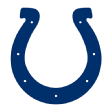
Indianapolis Colts
The move: Staying the course with coach Chuck Pagano and GM Ryan Grigson
Owner Jim Irsay easily could have justified changing out the Colts' leadership. The team's free-agent spending spree last offseason proved to be money poorly spent. Andrew Luck's uneven performance and season-ending injury shook the organization at the one spot where it had been most stable. Sticking with both Pagano and Grigson amid questions about how well the two work together was a bold move for Irsay even though it represented the status quo.

Jacksonville Jaguars
The move: Drafting Myles Jack
Significant injury concerns explained Jack's fall from certain top-10 overall selection to second-round draft choice. The Jaguars, desperate for front-line talent on defense, could not resist taking a chance. It was part of the NFL's most dramatic overhaul for 2016. The Jaguars' aggressive moves on defense might need to pay off quickly for ownership to remain as patient and measured as it has been in recent seasons. Much could hinge on whether Jack's knee problems limit his production.
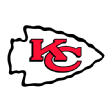
Kansas City Chiefs
The move: Paying aging defenders
Keeping Tamba Hali and Derrick Johnson had obvious appeal for the Chiefs as they tried to keep together a formidable defense for at least another season. The financial commitment was not prohibitive -- $21.25 million in guarantees between the two deals -- but it was significant enough to limit the Chiefs' resources and flexibility. Hali, 32, wore down late last season. Johnson, 33, bounced back from a torn Achilles tendon. The Chiefs are banking on both staying healthy and productive at an advanced age.

Los Angeles Rams
The move: Going all-in for Jared Goff
Trading up from the 15th overall pick to the first overall pick was arguably the boldest move of this NFL offseason. The Rams gave up the 15th, 43rd, 45th and 76th picks this year, plus their first- and third-round choices in 2017. They came away with Goff, a fourth-rounder and a sixth-rounder. The trade affirmed the Rams' thinking that they are a quarterback away from contending.
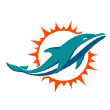
Miami Dolphins
The move: Rescinding the transition tag from Olivier Vernon
Replacing a productive 25-year-old player such as Vernon with a 31-year-old veteran such as Mario Williams generally is not the way to go. However, the Dolphins' huge 2015 spending outlay for Ndamukong Suh created tough choices elsewhere on the roster, specifically along the defensive line. Vernon bolted for the New York Giants once the Dolphins decided to let him hit the market.

Minnesota Vikings
The move: Subtracting speed at wide receiver
Letting Mike Wallace go hardly qualifies as a bold move these days, but the Vikings' decision to replace him with a different type of wideout was notable for now. First-round pick Laquon Treadwell would not be the first receiver to flourish in the NFL after running a relatively slow 40-yard time (4.6 seconds). His addition does not address questions about the Vikings' speed on offense.

New England Patriots
The move: Trading their best pass-rusher
Sending Chandler Jones to Arizona for guard Jonathan Cooper and a second-round pick could make sense in the long term if the Patriots knew they could not realistically re-sign Jones once his contract expires following the 2016 season. Still, teams generally do their best to keep 26-year-old players coming off 12.5-sack seasons. New England went against convention with this move, not the first time the Patriots have parted with highly drafted home-grown talent.

New Orleans Saints
The move: Betting on their defensive personnel
Spending for tight end Coby Fleener in free agency within a tight salary-cap situation robbed resources the Saints could have used to address a defense that has fared horrendously of late. New Orleans ranked last in points allowed and defensive expected points added (EPA) last season. The Saints seem to be saying they think new coordinator Dennis Allen will fare much better than predecessor Rob Ryan at getting more from the existing personnel. That's bold of them.

New York Giants
The move: Replacing Tom Coughlin with a newbie
Coughlin is 69 years old and had been an NFL head coach for 20 seasons before being replaced this offseason. Ben McAdoo is 38 and had never called plays before the Giants made him their offensive coordinator in 2014, his first job as a coordinator. Older and more experienced isn't always better, of course, and something was going to change after the organization suffered through a third consecutive losing season. Keeping GM Jerry Reese and going with McAdoo over Coughlin was still bold.

New York Jets
The move: Playing hardball with QB Ryan Fitzpatrick
NFL teams tend to coddle quarterbacks, but the Jets are going to the opposite extreme. They've dared Fitzpatrick to find a better offer on the open market, risking the possibility that the relationship could sour and/or Fitzpatrick could sign with another team. It's a bold move in an era when teams eagerly overpay quarterbacks for fear of not having a decent one.
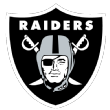
Oakland Raiders
The move: Courting Las Vegas
Months after the Rams outflanked the Raiders in their quest to occupy the Los Angeles market, Oakland emerged as a player in Las Vegas. Team owner Mark Davis, relatively quiet during the Los Angeles negotiations, has spoken loudly and clearly regarding Las Vegas. He said the Raiders will move to Vegas if the city can follow through on the stadium plan that has been discussed. It seems like more than posturing given the NFL's hard focus on maximizing profits.

Philadelphia Eagles
The move: Going all-in at QB
The Eagles were already paying starting money to Sam Bradford and strong backup money to Chase Daniel when they mortgaged their draft to select quarterback of the future Carson Wentz with the second overall pick. This probably wasn't how the Eagles drew up their offseason from the beginning, but one thing led to another, and here they are. Their bold move for Wentz is the one that matters most for the long term.

Pittsburgh Steelers
The move: Acquiring tight end Ladarius Green
The Steelers haven't had to act boldly in recent seasons, but they did move aggressively once tight end Heath Miller retired, signing Green to a four-year, $20 million deal even though the 26-year-old never exceeded 37 receptions in any of his four seasons behind Antonio Gates in San Diego. Miller exceeded 40 catches in each of his past nine seasons with Pittsburgh. The Steelers will need Green to produce even more in the absence of suspended wideout Martavis Bryant.

San Diego Chargers
The move: Sticking with the OL
The offensive line was a primary weakness in 2015, putting pressure on Philip Rivers while bogging down the running game. The Chargers' need for pass-rush help was arguably greater, however, and so the team used the third overall pick on Joey Bosa. San Diego is banking on King Dunlap and Orlando Franklin staying healthy. Chris Watt, Trevor Robinson and Max Tuerk are all coming off surgeries. San Diego appears vulnerable to another rough season along the line.

Seattle Seahawks
The move: Blowing up the OL
The offensive line is the one area where Seattle has struggled during the Pete Carroll/John Schneider era. That hasn't stopped Russell Wilson from shining at quarterback. It hasn't stopped the Seahawks from ranking among the NFL's rushing leaders. But it has contributed to the team's struggles against the Rams within the division while increasing the injury risk for Wilson. Seattle needed to make changes along the line, but it's too early to say whether the team has made upgrades after parting with left tackle Russell Okung and right guard J.R. Sweezy. Moving former tackle and guard Justin Britt to center looks like a gamble.

San Francisco 49ers
The move: Hiring Chip Kelly as head coach
The 49ers exercised their contract option on Colin Kaepernick after letting him explore trade opportunities, but the status quo prevailed at QB and throughout most of the roster. No move the 49ers made comes close to matching the boldness of hiring Kelly. By largely standing pat from a veteran personnel perspective, the 49ers are betting on Kelly's ability to get more from the young, unproven players already on the roster.

Tampa Bay Buccaneers
The move: Firing coach Lovie Smith
The Buccaneers were only 8-24 in two seasons with Smith, but there was some expectation the team would stay the course while building around quarterback Jameis Winston. Smith had a long track record of success in Chicago, after all. Hiring offensive coordinator Dirk Koetter as head coach maintained continuity for the offense, at least.
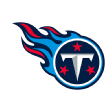
Tennessee Titans
The move: Trading away the No. 1 pick
Sticking with Mike Mularkey as head coach was the opposite of bold, which makes it bold in another way. But for sheer impact, it was tough to match the haul Tennessee secured from the Rams in exchange for the first overall pick in the draft. The Titans landed two first-round picks, two seconds and two thirds as part of the deal, setting up new GM Jon Robinson for years to come.

Washington Redskins
The move: Spending big for Josh Norman
Making Norman the NFL's highest-paid cornerback by annual average looked like a classic Daniel Snyder move from years ago. Perhaps it was one, but it was also opportunistic. All-Pro cornerbacks don't hit the market every year. When Norman did, the Redskins struck quickly. And in the process, they got badly needed help for their secondary from an unexpected source.
